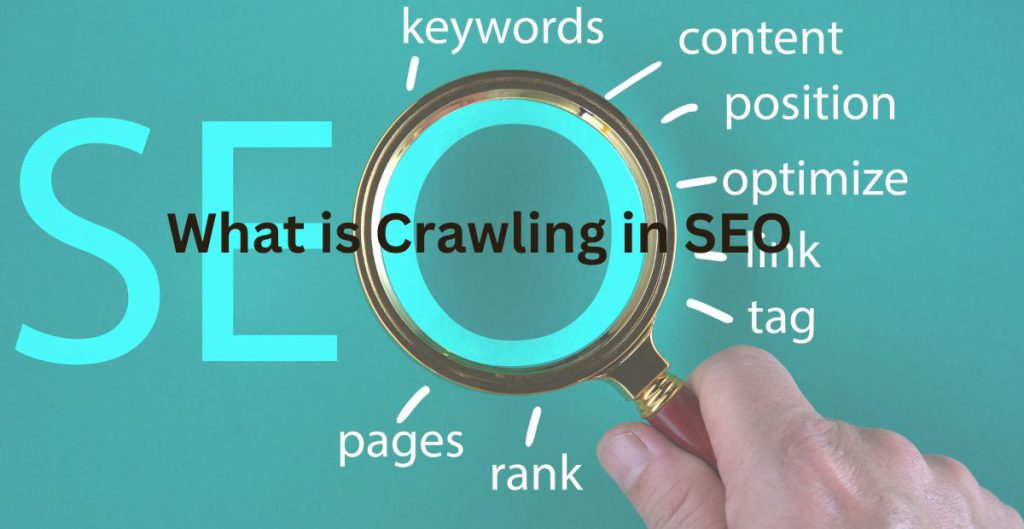
Search Engine Optimization (SEO) is a vast field that involves numerous technical and strategic activities. One of the most fundamental processes in SEO is crawling, which is essential for search engines to discover and index website content.
In this article, we’ll explore what crawling is, how it works, why it’s necessary, and how you can optimize your site for better crawling and indexing by search engines like Google, Bing, and others.
Table of Contents
1. What is Crawling in SEO?
2. How Do Search Engine Crawlers Work?
3. Why is Crawling Important in SEO?
4. Crawling vs. Indexing: What’s the Difference?
5. Factors Affecting Search Engine Crawling
6. How to Optimize Your Website for Better Crawling
7. Tools to Monitor and Control Crawling
8. Common Crawling Issues and How to Fix Them
9. FAQs About Crawling in SEO
1. What is crawling mean in seo
Crawling refers to the process by which search engines like Google, Bing, and Yahoo discover new or updated content on the Internet. Specialized software programs known as crawlers, bots, or spiders systematically navigate the web, following links from one page to another.
As they crawl a site, they collect data about the content and structure of each page, which is then used for indexing.
A crawler’s job is to scan and download web pages and store information for future retrieval, ensuring that the pages are available for ranking when someone searches for relevant keywords.
Search engine bots, also known as web crawlers, are automated programs used by search engines like Google to systematically browse and index websites for the purpose of ranking content in search results.
2. How do search engines work web crawlers
Crawlers start by visiting a list of known URLs (typically sites that have already been crawled and are deemed trustworthy).
These URLs are stored in the search engine’s crawl queue. When a crawler visits a website, it does the following:
– Follows links: The crawler will identify and follow internal and external links on the page.
– Reads the content: It scans the text, images, meta tags, scripts, and other on-page elements.
– Downloads data: The information from the page is downloaded and stored in a database for later indexing.
– Follows robots.txt rules:It obeys the rules set in the site’s robots.txt file, which can instruct the bot to avoid crawling certain pages or sections of the site.
Some popular crawlers include:
– Googlebot (Google’s crawler)
– Bingbot (Microsoft Bing’s crawler)
– DuckDuckBot (DuckDuckGo’s crawler)
– Baidu Spider (Baidu’s crawler)

3. Why is Crawling Important in SEO?
Crawling is the foundation of a search engine’s ability to serve relevant content to users. Without crawling, search engines cannot discover or index new web pages, which means your site will not appear in search results.
For SEO professionals, ensuring that a website is crawlable is essential. If search engines can’t properly crawl your website, they won’t be able to index your pages, which means those pages won’t rank for any keywords.
Effective crawling helps:
– Increase site visibility: More crawled and indexed pages mean greater chances of ranking for various search queries.
– Update content in search results: Frequent crawling ensures updated or new content is quickly reflected in the search engine’s index.
– Identify broken links: Crawlers help find broken links, allowing site owners to fix and improve the user experience.
4. Crawling vs. Indexing: What’s the Difference?
Though often used interchangeably, crawling and indexing are two distinct processes in SEO:
– Crawling is the discovery process where search engines look for new or updated content.
– Indexing is the process where the crawled content is stored and organized in the search engine’s database so it can be retrieved and ranked in search results.
For instance, a page might be crawled but not indexed if the search engine deems it irrelevant, low-quality, or redundant.
5. Factors Affecting Search Engine Crawling
Several factors influence how search engine bots crawl your website. These include:
5.1 Site Structure and Internal Linking
A well-structured site with clear and concise internal linking helps crawlers easily navigate and find all pages. Websites with a complex or confusing structure might have pages that remain undiscovered by bots.
5.2 Crawl Budget
Search engines allocate a crawl budget to every site, which is the number of pages they will crawl within a given time. Factors like your site’s authority, number of pages, and server response times influence your crawl budget.
5.3 Robots.txt
The robots.txt file instructs crawlers which pages they can or cannot access. Blocking important pages via robots.txt can prevent search engines from discovering key content.
5.4 Sitemaps
Submitting an XML sitemap helps search engines understand your site’s structure and find important pages more easily. It’s especially useful for large or newly launched websites.
5.5 Server Performance
If your site’s server is slow or frequently goes down, it can hinder a search engine’s ability to crawl your website effectively.
5.6 Duplicate Content
If your site has many duplicate pages, search engines may choose to crawl fewer pages or devalue your content. Using canonical tags can help resolve duplicate content issues.
6.How to Make Your Website More Crawl-Friendly
Here are essential practices to ensure that search engines can crawl and index your website effectively:
6.1 Improve Site Architecture
A clear and logical site structure helps crawlers easily find and index your content. Ensure every significant page is just a few clicks away from your homepage.
6.2 Use Internal Links
Use descriptive and relevant internal links to guide crawlers from one page to another, ensuring they can discover and index all content.
6.3 Create and Submit an XML Sitemap
An XML sitemap lists all the essential pages on your website. Submitting it via Google Search Console and Bing Webmaster Tools allows search engines to better understand your site structure.
6.4 How to optimize crawl budget
If you have a large site, you can optimize your crawl budget by blocking non-essential pages (e.g., admin pages, duplicate content) via robots.txt or meta tags, allowing crawlers to focus on important pages.
6.5 Fix Broken Links
Broken links can disrupt the crawler’s journey across your site. To ensure smooth crawling, regularly audit and fix any broken internal or external links.
6.6 Avoid Duplicate Content
Ensure that your site has no duplicate pages. Search engines can be informed which version of a page is the main one by using canonical tags.
6.7 Minimize Page Load Time
Fast-loading pages improve the user experience and help with crawling. Slow page load times can lead crawlers to abandon pages before fully loading.
read more: Is a Document SEO Friendly?
7. Tools to Monitor and Control Crawling
Several tools allow you to monitor crawling activity, control which pages are crawled, and diagnose issues:
– Google Search Console: Provides insights into crawl errors, indexed pages, and sitemap submissions.
– Bing Webmaster Tools: Similar to Google Search Console, with features to track Bing bot activity.
Screaming Frog: This is a desktop-based SEO tool that simulates a search engine’s crawler to audit your site for crawl ability issues.
– Ahrefs and SEMrush: These tools offer website audits that can identify crawling errors and other technical SEO issues.
8. Common Crawling Issues and How to Fix Them
Some of the most common crawling issues include:
8.1 Crawl Errors
These occur when a crawler can’t access a page. They can result from server issues, broken links, or incorrect robots.txt directives. Make sure to often check Google Search Console for crawl issues.
8.2 Blocked Pages
Pages can be unintentionally blocked via robots.txt or the meta robots tag. Ensure that crawlers do not block essential pages and that crawlers can access them.
8.3 URL Parameters
Dynamic URL parameters can make the same content accessible via multiple URLs, leading to duplicate content issues. Use canonical tags to consolidate duplicate URLs.
8.4 Mobile Crawling Issues
With the rise of mobile-first indexing, ensuring your site is mobile-friendly is essential. Ensure that all content is accessible and optimized for mobile crawlers.
9. FAQs About Crawling in SEO
Q1: How often do search engines crawl my site?
Search engines crawl only some sites with the same frequency. Content updates, domain authority, and website size can influence how often your site gets crawled.
High-traffic sites may be crawled daily, while smaller or inactive sites may only be crawled occasionally.
Q2: What is a crawl budget?
A crawl budget is the number of pages a search engine will crawl on your site during a given period. Your site’s authority, the number of links pointing to it, and server speed influence it.
Q3: How can I check if Google is crawling my website?
You can check Google’s crawling activity on your site using Google Search Console. The Crawl Stats report provides detailed insights into how frequently Googlebot crawls your site.
Q4: How can I stop search engines from crawling certain pages?
You can prevent crawlers from accessing specific pages by using the robots.txt file or adding the index meta tag to the page’s HTML.
Q5: Does crawling guarantee indexing?
No, crawling does not guarantee indexing. A search engine might decide not to index a page if it deems the content.
Low-quality, irrelevant, or duplicate.
Conclusion
Crawling is an essential process in SEO, allowing search engines to discover and index new content on the web.
Ensuring your website is appropriately crawlable can improve its chances of being indexed and ranked for relevant search queries.
Regular monitoring and optimization of crawlability, using tools like Google Search Console and Screaming Frog, will help you avoid common issues and maximize your website’s visibility.
In SEO, understanding and optimizing for crawling is one of the foundational steps toward improving your site’s overall performance in search engine rankings.